Get the inside scoop on the future of Microsoft 365 from the industry’s brightest minds during our upcoming “Microsoft 365 Community Talks” series. Register today!
We’ve written a lot about migrating content into Microsoft 365, but there are also many reasons organizations might want to migrate from one tenant to another or consolidate separate tenants.
Sometimes an organization winds up with multiple tenants of Microsoft 365 across different components, or organizations need to be consolidated after they merge.
There are also a wide variety of reasons information in Microsoft 365 or Microsoft Teams may need to be restructured to better meet the needs of the organization. They may have too much sprawl or the structure of Teams may have gotten out of hand, for instance.
In any case, there are a lot of considerations organizations need to think through before they get going with a Microsoft 365 tenant to tenant migration.

Microsoft 365 Platform Migration Considerations
Because the use of the applications in Microsoft 365 is intertwined, it’s not enough to simply understand what content lives within each application. A great example of this would be HR resources an entire organization may need access to but only a few people should have the right to edit.
There may be Microsoft Teams in the environment that require a Communication site (apart from their SharePoint Team site) for the purpose of a cleaner presentation and to share to different sets of users.
If there is any sensitive information in the environment (credit card numbers, Personal Identifiable Information, etc.) it’s important that the organization have a plan for where it should exist and keep track of who can access that information.
To this end, sensitive information should be stored in SharePoint in a highly monitored site or library with limited access. Users should not have sensitive information in their OneDrives.
If users are accessing Power Automate or PowerApps, you may need to see what instances from those apps exist and which ones may need to be exported, imported, and then re-connected as part of your project.
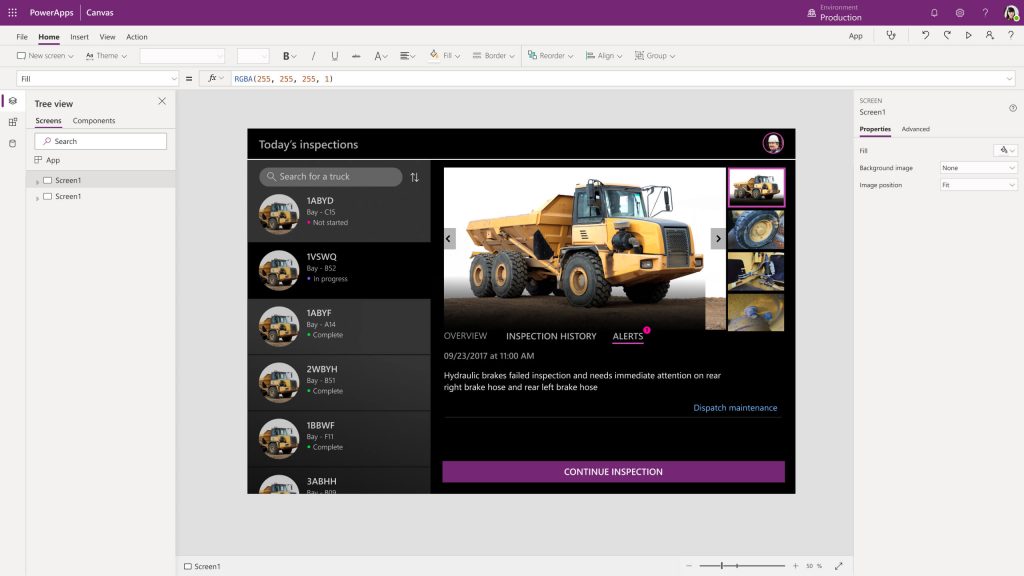
Microsoft Teams Migrations and Restructuring
AvePoint’s FLY migration solution allows you to view and migrate channels in Microsoft Teams to other Microsoft 365 tenants.
It’s important to understand what Teams can be consolidated into a single Team with many channels and which ones can be left behind. There may also be some Teams with many channels that can be broken out into multiple Teams.
With FLY it’s easy to convert multiple Teams to channels under one Team or break apart the Teams with channels that have gotten out of hand by making a new Team for each channel. It’s also possible to view the structure of each Team and see the channels that exist within the Team. Via the Exchange Discovery reports and SharePoint discovery reports, it’s also possible to report on the email and file information behind each Microsoft Team.
Plus, with the latest release of AvePoint Fly, new integration with EnPower enables tenant-level discovery. After selecting your tenant and choosing your workspace, you just have to run your discovery and you’ll see a dashboard view for each selected workspace as well as a details page where you can export, filter, and search through your findings.
Because of the widespread use of Microsoft Teams, it’s common to see many Teams with the same or similar names, as well as to find a large amount of stale, unused, or test Teams within a tenant. You’ll want to know the tab structures within Teams and which Teams have Planner boards that need to be migrated as well.
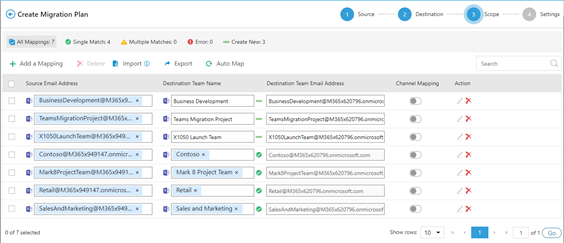
Discovery Reports
FLY enables you to easily report on the size and scope of email boxes, files, and Microsoft Teams and Groups in a migration project.
This is extremely helpful not only to understand the total data size of the migration, but to understand how many email boxes there are and if there are any objects that stand out in size. Isolating larger email boxes, Teams or SharePoint Sites can give you a good idea of where the bulkier content in your tenant lives, and help you understand which objects could take longer to migrate and which need to be broken up.
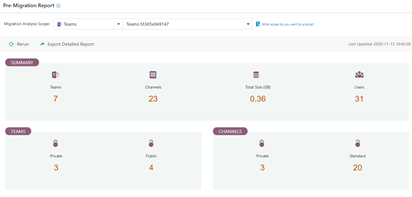
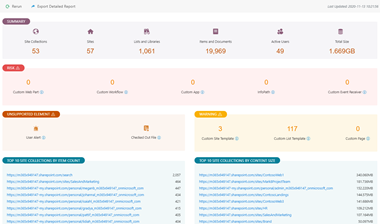
In addition, you can identify stale user mailboxes or shared mailboxes that don’t need to be included in the migration, saving you time and energy for your project.
Why Use AvePoint to Migrate Microsoft 365
AvePoint’s FLY solution makes it easy to migrate to Microsoft 365 in a flash. FLY is simple to install on a server or a cloud VM and easy to connect to Microsoft 365 for tenant restructuring or tenant to tenant migrations!
FLY enables you to start moving data in just minutes. Simple mapping features and reporting mean that you have many tools at your disposal to control your migration projects and always keep track of your progress.
FLY’s discovery reports allow you to get an overall picture as well as detailed information about the source environment to help you easily plan your migration.
FLY also automates the migration process. Just setup your scheduled migration jobs and run incremental (or delta) migrations to synchronize the source and destination environments. You can even save and reuse your migration setting over and over again!
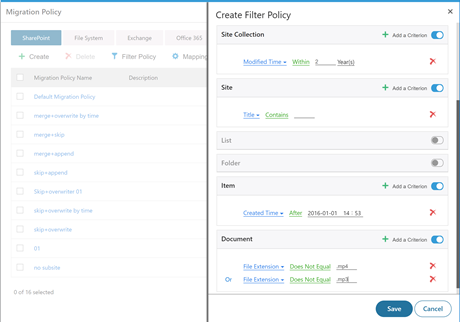
Once your migration starts, detailed reporting shows your progress, tracks your performance, and can highlight any throttling that occurred. FLY doesn’t give up! If a job fails or can be retried, FLY will either keep attempting the migration job or catch the data again on the next incremental run.
FLY is backed by AvePoint’s years of expertise and 24/7 support so you know you always have experienced partners by your side. There’s no faster or easier way to migrate or restructure data in Microsoft 365.
With flexible licensing options, easy install, automated reporting, and around-the-clock support, AvePoint’s FLY migration solution can make your next migration project a cinch.

Check Fly out for yourself!
Get started with a free trial or contact us today to learn more!

